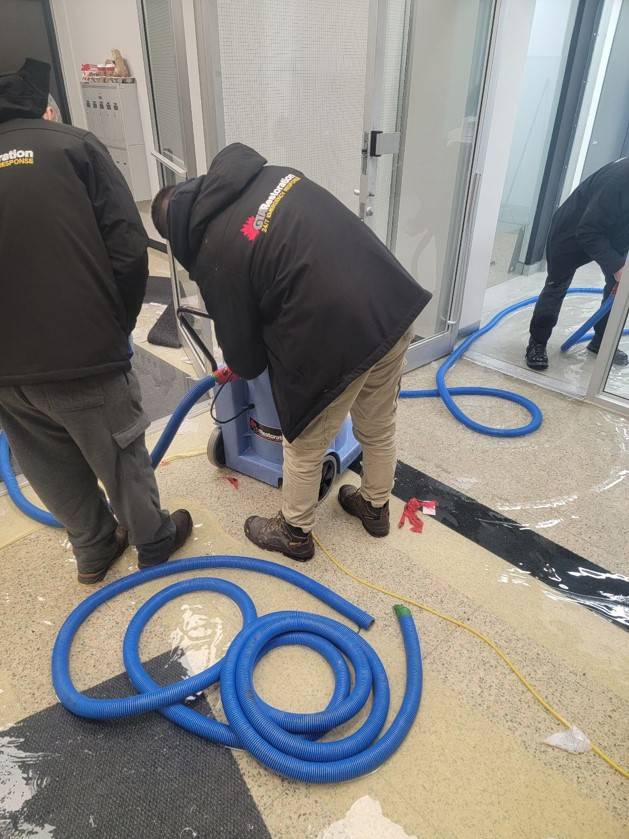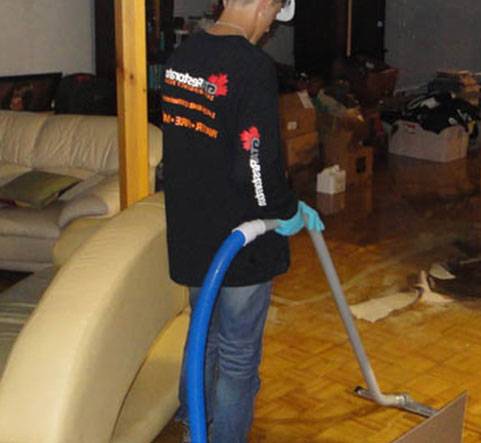Introduction:
A flooded basement can be a homeowner’s nightmare, wreaking havoc on property and posing significant health risks if not handled properly. Whether the flooding is caused by heavy rains, burst pipes, or a malfunctioning sump pump, prompt and efficient cleanup is essential to minimize damage and prevent further issues such as mold growth and structural damage. In this comprehensive guide, we’ll delve deeper into each of the ten essential steps for efficient flooded basement cleanup, providing detailed insights and practical tips to help you navigate this challenging situation with confidence.
Safety First:
The safety of you and your family should always be the top priority when dealing with a flooded basement. Before entering the affected area, ensure that the electricity to the basement is turned off to avoid the risk of electrocution. If the water level is high or there is standing water near electrical outlets or appliances, refrain from entering the basement until it’s safe to do so. Additionally, consider wearing protective gear such as rubber boots, gloves, and a mask to minimize exposure to contaminants and airborne particles.
Assess the Damage:
Once it’s safe to enter the flooded basement, take the time to assess the extent of the damage. Begin by determining the source of the flooding and addressing any immediate concerns such as stopping the flow of water or repairing a burst pipe. Next, survey the area to gauge the water level and identify any structural or electrical damage. This initial assessment will help you develop a plan of action for the cleanup process and determine if professional assistance is necessary.
Remove Standing Water:
With safety precautions in place and the damage assessed, it’s time to start removing standing water from the basement. Depending on the severity of the flooding, you may need to use a submersible pump, wet/dry vacuum, or bucket brigade to extract the water. Work methodically from one end of the basement to the other, ensuring that all areas are thoroughly drained. Be mindful of any debris or sediment that may have accumulated in the water and dispose of it properly.
Dispose of Damaged Items:
As you remove the standing water, take the opportunity to assess and inventory the items in your basement. Unfortunately, many belongings may have been irreparably damaged by the floodwaters and will need to be disposed of properly. This may include furniture, carpeting, electronics, and personal items such as clothing and books. Separate salvageable items from those that are beyond repair and document any losses for insurance purposes.
Clean and Disinfect:
Once the water has been removed and damaged items disposed of, it’s essential to thoroughly clean and disinfect all surfaces in the basement to prevent mold and bacteria growth. Start by scrubbing walls, floors, and other hard surfaces with a mixture of detergent and water. For disinfection, use a solution of bleach and water (one cup of bleach per gallon of water) and allow it to sit for at least 10 minutes before rinsing thoroughly with clean water. Pay special attention to areas that came into direct contact with floodwater, such as baseboards, trim, and electrical outlets.
Dry Out the Basement:
After cleaning and disinfecting, the next step is to dry out the basement to prevent mold growth and further damage to your property. Promote airflow and ventilation by opening windows and doors, using fans, and running a dehumidifier to remove excess moisture from the air. If weather conditions permit, consider using natural ventilation to expedite the drying process. Be patient and thorough, as proper drying may take several days or even weeks depending on the extent of the flooding and the humidity levels in your area.
Inspect for Mold:
As the basement begins to dry out, it’s essential to remain vigilant for any signs of mold growth. Mold thrives in damp, humid environments and can pose significant health risks if left unchecked. Inspect the walls, floors, ceilings, and any other surfaces in the basement for visible signs of mold, such as dark spots or musty odors. If mold is detected, it’s crucial to address it promptly to prevent it from spreading further. Consider hiring a professional mold remediation specialist to safely remove and remediate the affected areas.
Repair Structural Damage:
In addition to addressing mold and moisture issues, it’s essential to repair any structural damage caused by the flooding. This may include patching cracks in the foundation, replacing damaged drywall or insulation, and reinforcing weakened supports or beams. If you’re unsure about the extent of the damage or how to properly repair it, consult with a qualified contractor or structural engineer for expert guidance. Addressing structural issues promptly will help ensure the long-term stability and safety of your home.
Waterproofing Measures:
To prevent future flooding and water intrusion, consider implementing waterproofing measures in your basement. This may include installing a sump pump to remove excess water, sealing cracks and gaps in the foundation, and improving drainage around the perimeter of your property. Consult with a waterproofing specialist to determine the most effective solutions for your specific needs and budget. By taking proactive steps to waterproof your basement, you can minimize the risk of future water damage and protect your investment in your home.
Restore and Rebuild:
With the cleanup and repairs complete, it’s time to focus on restoring your basement to its pre-flood condition. Depending on the extent of the damage, this may involve repainting walls, replacing flooring, and reinstalling fixtures or furnishings that were removed during the cleanup process. Take this opportunity to enhance the functionality and aesthetics of your basement by incorporating waterproof materials and finishes that are resistant to moisture and mold. Consider consulting with a professional contractor or interior designer to help you achieve the desired look and feel for your renovated basement.
Conclusion:
Dealing with a flooded basement can be a challenging and stressful experience, but by following these ten essential steps for efficient cleanup, you can minimize damage and restore your basement to its former glory. Remember to prioritize safety at all times, take thorough inventory of damaged items for insurance purposes, and seek professional assistance if needed. With patience, perseverance, and proper planning, you can overcome the challenges of flooded basement cleanup and enjoy a safe, healthy, and comfortable living space once again.




